Strayed in the wilderness, with the sun setting and the temperature dropping, desperately needing a fire to keep warm and signal for help. But there’s a problem – you can’t find any kindling to start your fire.
What do you do? Panic? Or do you tap into the ancient wisdom of our ancestors and learn how to start a fire without kindling?
Starting a fire without kindling can be challenging, as it requires patience, creativity, and a bit of know-how.
But fear not; our article will guide you through the process, presenting various strategies and techniques that differ from traditional fire-starting methods.
In addition, you’ll learn about alternative materials and methods, such as using a fire plow, friction-based techniques, and even harnessing the sun’s power.
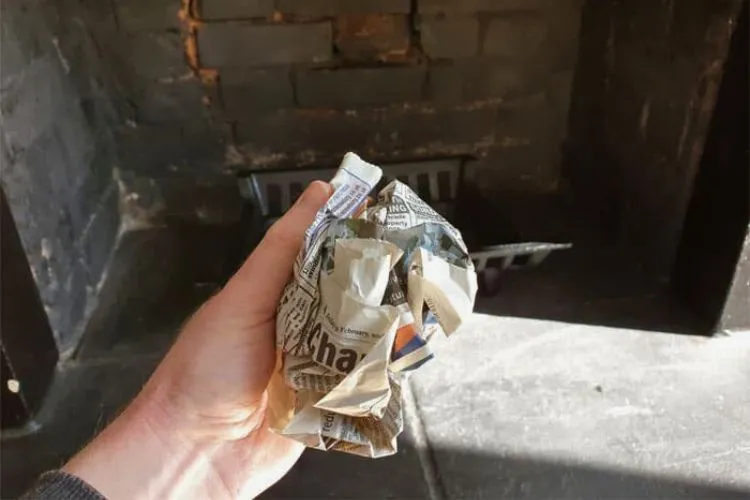
How to start a fire without kindling: Alternative Methods for Outdoor Enthusiasts and Survivalists
Here I will explore various alternative methods for igniting a fire without using kindling, offering insight for outdoor enthusiasts and survivalists alike.
Methods that utilize natural materials
Nature provides an abundance of materials that can be used to ignite a fire. Some of these materials include dry leaves, grass, and bark. To use these materials effectively, follow these steps:
- Preparation: Gather enough dry leaves, grass, or bark, and create a small pile.
- Placement: Arrange the materials to allow for airflow, which is crucial for combustion.
- Ignition: Use a fire starter, such as a flint and steel, to create sparks that ignite the materials.
Methods that use household items
Common household items can also be used to start a fire without kindling. Some examples include cotton balls, paper, and lint. To use these items, follow these steps:
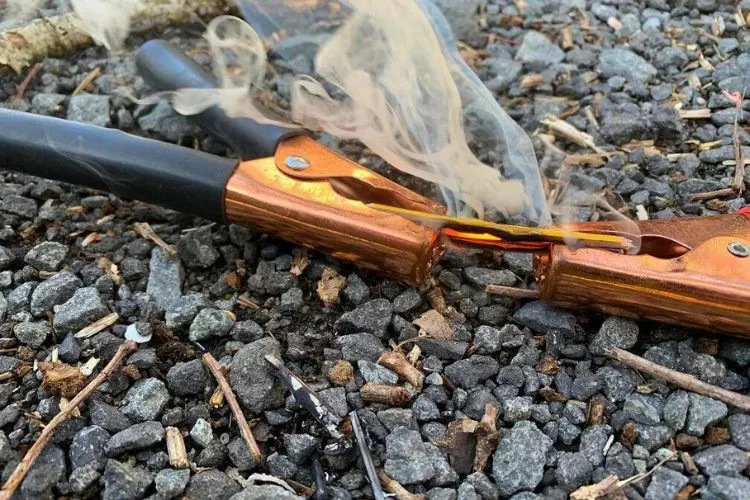
- Cotton balls: Dip cotton balls in petroleum jelly or cooking oil, acting as a fuel source. Place the cotton balls in the center of your fire pit and ignite them using a lighter or matches.
- Paper:
- Crumple up sheets of paper and place them in the center of your fire pit.
- Stack small twigs and branches on top, allowing for airflow.
- Ignite the paper using a lighter or matches.
- Lint:
- Collect the lint from your dryer and place it in the center of your fire pit.
- Stack small twigs and branches on top, allowing for airflow.
- Ignite the lint using a lighter or matches.
Advanced techniques
More advanced techniques, such as the hand drill and the fire plow, can be used to expand their fire-starting skills.
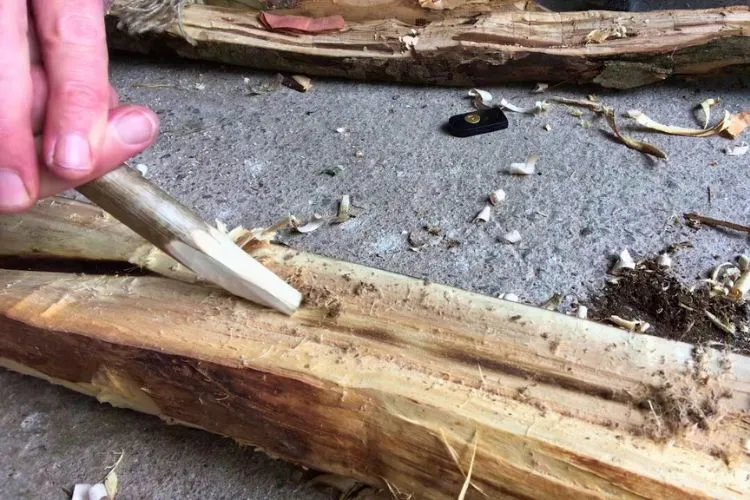
- Hand drill: To use the hand drill method, you will need a spindle (a straight, dry stick) and a fireboard (a flat piece of softwood). Use a knife to create a small indentation in the fireboard, and place a small amount of tinder underneath. Next, place the spindle into the indentation and rapidly spin the spindle back and forth using the palms of your hands to create friction and heat. Once an ember is formed, transfer it to your tinder and gently blow on it to ignite the fire.
- Fire plow: You will need a flat piece of softwood and a hardwood stick with a sharp edge for the fire plough method. Create a groove in the softwood, and place a tinder at the end of the groove. Hold the hardwood stick at a 45-degree angle and rapidly scrape it back and forth along the groove to create friction and heat. Once an ember is formed, transfer it to your tinder and gently blow on it to ignite the fire.
Starting a fire without kindling may seem daunting, but it is entirely achievable with practice and knowledge of alternative methods.
Whether using natural materials, household items, or advanced techniques, these methods can be invaluable on your next camping or survival trip.
Remember to always prioritize safety and caution when starting fires, and enjoy the satisfaction of mastering these ancient skills.
How do you make your kindling? (Step-by-Step Guide Focused on Safety and Efficiency)
Making your kindling is essential for any outdoor enthusiast or homeowner with a fireplace.
This step-by-step guide will walk you through creating kindling using various materials, focusing on safety and efficiency. So, let’s get started!
Materials Needed
To make kindling, you will need the following tools and materials:
- Axe or hatchet: A sharp axe or hatchet is crucial for splitting wood into kindling-sized pieces.
- Saw: A saw can cut the wood into smaller lengths before splitting it with an axe.
- Gloves: Wearing gloves will protect your hands from splinters and potential injuries while handling wood.
A sturdy chopping block provides a stable surface for splitting wood and helps prevent accidents.
Preparing the Wood
To create kindling, you must first choose the right wood. Dry, seasoned wood is best, as it ignites more easily than green or wet wood.
Hardwoods such as oak, maple, and hickory are excellent choices, as they burn longer and hotter than softwoods.
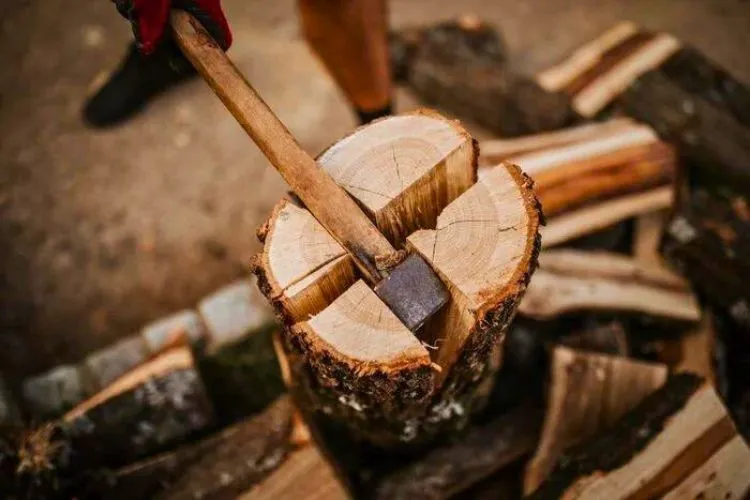
- Cutting the wood: Use a saw to cut the wood into smaller lengths, ideally 6 to 12 inches. This will make it easier to split the wood into kindling-sized pieces.
- Splitting the wood: Place a piece of wood on the chopping block and make a clean cut down the middle using an axe or hatchet. Continue splitting the wood into smaller pieces until they are roughly equal in length and thickness, ideally about 1 inch in diameter.
Storing and Using the Kindling
Once you’ve made your kindling, it’s essential to store it properly to keep it dry and safe from pests:

- Storing kindling: Store your kindling in a dry, well-ventilated area, such as a garage, shed, or under a covered porch. Elevate the kindling off the ground to prevent moisture absorption and deter pests.
- Using kindling:
- Place a small pile of kindling in the center of your fire pit or fireplace to start a fire.
- Stack the kindling in a crisscross pattern, allowing airflow between the pieces.
- Add larger logs to the kindling, ensuring they are not too heavy or tightly packed.
- Ignite the kindling using a fire starter, such as matches or a lighter, and enjoy your fire!
Making kindling is a simple yet valuable skill that can greatly improve your fire-starting abilities. By following this step-by-step guide and prioritizing safety and efficiency, you’ll be well on your way to mastering the art of kindling creation.
We encourage you to try making kindling and share your experiences in the comments section below. Happy fire-starting!
What Is The Easiest Way To Start A Fire Naturally?
The easiest way to start a fire naturally is using a simple “cotton wool method.” This method uses cotton wool, an inexpensive material that ignites easily when exposed to a spark. To start a fire using cotton wool, follow these steps:
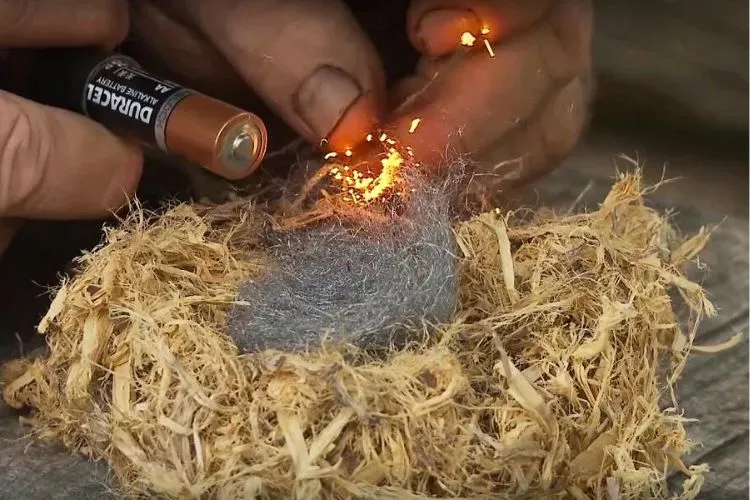
- Ruffle the fibers of the cotton wool and gently pull them apart to expose the softer inner part. This will make it easier for sparks to ignite the material1.
- Create a spark using a fire starter, such as a flint, steel, or ferrocerium rod. You can also use the battery and steel wool method, which involves touching the terminals of a 9-volt battery to a piece of steel wool to create sparks.
- Direct the sparks towards the cotton wool. Once the cotton wool catches fire, transfer it to a tinder nest of dry grass, leaves, small sticks, and bark.
- Gently blow on the ignited cotton wool to help the fire spread to the tinder nest.
- Remember, practicing fire safety when starting a fire is essential, regardless of the method used.
What Are 3 Primitive Ways To Start A Fire?
Three primitive ways to start a fire include the bow drill, fire plow, and hand drill methods. These methods rely on friction to create heat and eventually ignite a fire.
- Bow Drill Method: This method requires a curved piece of wood (bow), a bowstring made of rope or cord, a spindle, and a fireboard. The spindle is spun rapidly using the bow, creating friction between the spindle and the fireboard, eventually producing an ember1.
- Fire Plow Method: The fire plow method uses a hardwood stick with a sharp edge and a softwood fireboard. A groove is made in the softwood, and the hardwood stick is rapidly scraped back and forth along the groove, creating friction and heat until an ember forms.
- Hand Drill Method: The hand drill method requires a spindle and a fireboard. A small indentation is made in the fireboard, and the spindle is placed into the indentation. Then, the spindle is spun rapidly back and forth using the palms of the hands, generating friction and heat until an ember is produced.
Remember to always practice fire safety and ensure you have permission to start a fire in the area where you are attempting these methods.
frequently asked questions (FAQs)
u003cstrongu003eCan twigs be used as kindling?u003c/strongu003e
Yes, twigs can be used as kindling. They are an excellent choice for starting a fire. Twigs are small, thin, dry wood pieces that quickly and easily catch fire. They provide a good foundation for a fire, as they help to ignite larger pieces of wood or logs.
Can you use cardboard as kindling?
Yes, you can use cardboard as kindling, but with some caution. Cardboard can be an effective fire starter because it is made of paper materials that can catch fire easily. However, it is important to note that using cardboard as kindling can produce more smoke and potentially release harmful chemicals, depending on the type of ink or other substances used in the cardboard. To minimize these risks, use small, thin pieces of plain, untreated cardboard without glossy finishes or colored ink.
Conclusion:
Learning how to start a fire without kindling might seem challenging, but it is possible with the right techniques and alternative materials.
By exploring various fire-starting methods, such as the fire plow, hand drill, or flint and steel, and utilizing alternative tinder sources like dry leaves, grass, or even cotton balls, you can successfully ignite a fire without traditional kindling.
Remember to practice safety precautions and consider the environmental impact when starting a fire, regardless of the method used.
Ultimately, being resourceful and adaptable in your fire-starting skills can prove invaluable in various situations, from camping trips to emergency scenarios.


